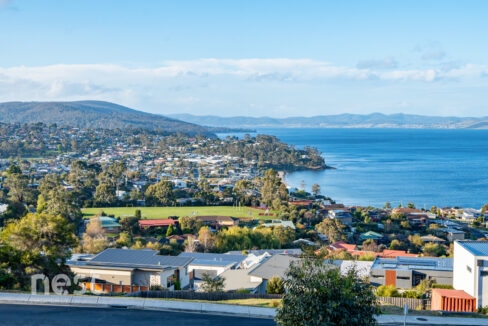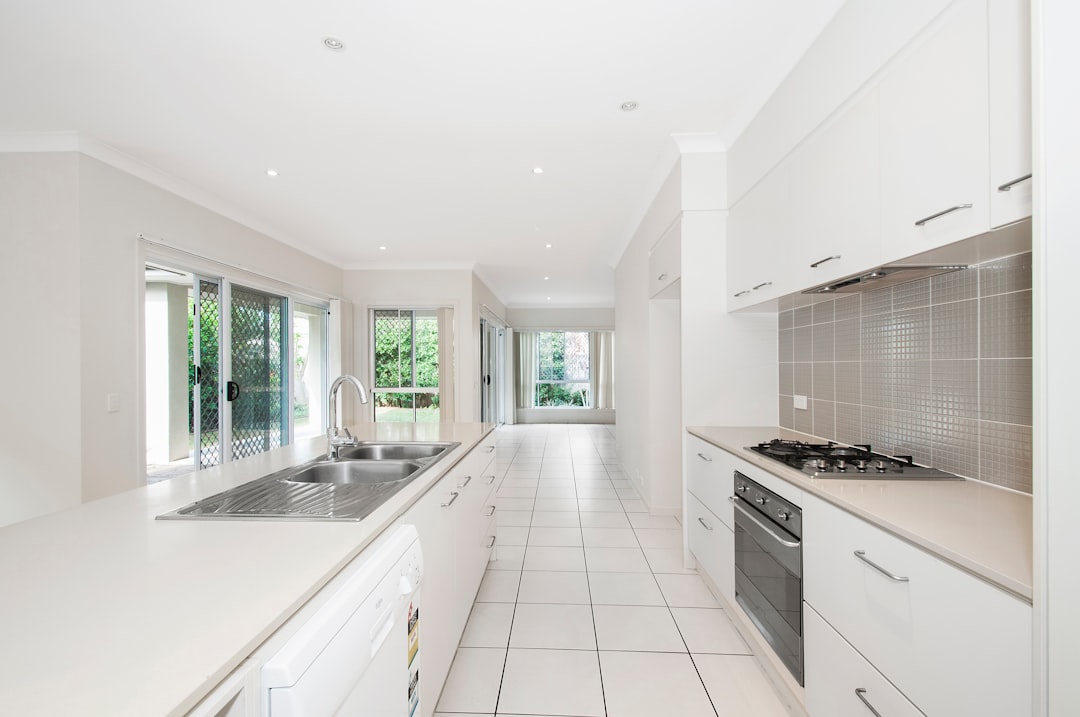

Commercial real estate encompasses a variety of property types that are used for business purposes. These properties are typically bought, leased, or rented out to generate income for the owner. There are several common types of commercial properties that you may come across in the market.
One of the most popular types is office buildings, which are designed to accommodate businesses and their employees. Office buildings can range from small single-tenant buildings to large skyscrapers with multiple tenants. These properties often feature amenities such as conference rooms, parking facilities, and security systems.
Retail properties, such as shopping centers and strip malls, are another common type of commercial real estate. These properties house stores, restaurants, and other businesses that cater to consumers. Retail properties are usually located in high-traffic areas to attract customers and drive sales.
Industrial properties include warehouses, manufacturing facilities, and distribution centers. These properties are used for storing goods, producing products, or fulfilling orders for businesses. Industrial properties often have large open spaces and high ceilings to accommodate machinery and equipment.
Another type of commercial property is multifamily buildings, which include apartment complexes and condominiums. These properties provide housing for multiple families or individuals and can offer amenities such as swimming pools, fitness centers, and community spaces.
Other types of commercial real estate include hotels, restaurants, healthcare facilities, and special purpose properties like gas stations or self-storage units. Each type of property has its own unique characteristics and requirements for ownership and management.
In conclusion, commercial real estate offers a diverse range of investment opportunities for individuals looking to generate income through property ownership. Understanding the different types of commercial properties available can help investors make informed decisions about where to allocate their resources in the market.
Commercial real estate has long been a cornerstone of wealth building for savvy investors. Offering opportunities to generate income and achieve significant capital growth, it provides a stable foundation for those seeking to diversify their portfolios. While residential properties often receive more attention, commercial real estate delivers unique benefits that can make it an attractive investment option.
One of the key advantages of commercial real estate is its potential for higher returns. Rental income from commercial properties often surpasses that of residential properties, with leases typically spanning several years. This stability ensures a consistent income stream, which is particularly appealing for long-term financial planning. Additionally, commercial tenants often bear the responsibility for certain operating expenses, such as maintenance and property taxes, reducing costs for the property owner.
Another benefit is the diversification opportunities that commercial real estate offers. Investing in office spaces, retail centers, or industrial properties allows you to spread your risk across different asset types. Each segment reacts differently to market conditions, providing a buffer against economic downturns in any single sector. For instance, while retail properties may experience challenges during economic slowdowns, industrial spaces often thrive due to the rise in e-commerce and logistics demand.
Commercial real estate also benefits from professional tenants. Businesses tend to prioritize maintaining their premises to align with their brand image, leading to better property upkeep. These tenants are often financially stable, reducing the likelihood of missed payments or defaults. Furthermore, long-term leases with commercial tenants provide predictable cash flow and reduce the frequency of tenant turnover.
Location plays a critical role in the success of commercial real estate investments. Properties in areas with high foot traffic, strong economic activity, and access to transportation hubs often see greater demand. Conducting thorough market research and understanding local trends can help you identify prime locations that offer the potential for growth and high occupancy rates.
While the rewards of commercial real estate are significant, so are the challenges. Entry costs can be higher compared to residential properties, requiring substantial capital upfront. Financing options may also differ, as lenders often assess the income-generating potential of the property rather than the buyer’s personal financial situation. For these reasons, it’s important to work with experienced professionals, such as brokers, property managers, and financial advisors, to navigate the complexities of the market.

Have you ever wondered how long it takes for properties to sell in Sandy Bay?. The average time properties stay on the market in this beautiful suburb is a key factor for both buyers and sellers to consider. When looking to buy a home in Sandy Bay, knowing the average time properties stay on the market can give you an idea of how competitive the market is.
Posted by on 2024-12-16

When it comes to finding the perfect home in Sandy Bay, one of the first questions that often comes to mind is: What is the average price of houses for sale in this area?. Well, let's take a closer look at the current real estate market in Sandy Bay. As of recent data, the average price of houses for sale in Sandy Bay is around $500,000.
Posted by on 2024-12-16

When looking at homes for sale in Sandy Bay, one may wonder what the most common number of bedrooms is.. It's a question that many potential home buyers ask themselves as they search for their perfect property. In Sandy Bay, the most common number of bedrooms in homes for sale tends to be three.
Posted by on 2024-12-16

Waterfront properties in Sandy Bay are highly sought after and can be quite limited in availability.. The stunning views of the bay, with its tranquil waters and picturesque sunsets, make these properties incredibly desirable for those looking to invest in a piece of paradise. Due to the high demand for waterfront real estate in Sandy Bay, properties that come on the market often sell quickly.
Posted by on 2024-12-16
| Sandy Bay Hobart, Tasmania |
|||||||||||||||
|---|---|---|---|---|---|---|---|---|---|---|---|---|---|---|---|

View of Wrest Point Casino and Sandy Bay
|
|||||||||||||||
 |
|||||||||||||||
| Coordinates | 42°54′04″S 147°19′37″E / 42.901°S 147.327°E | ||||||||||||||
| Population | 12,315 (2021 census)[1] | ||||||||||||||
| Postcode(s) | 7005 | ||||||||||||||
| LGA(s) | City of Hobart | ||||||||||||||
| State electorate(s) | Clark | ||||||||||||||
| Federal division(s) | Clark | ||||||||||||||
|
|||||||||||||||
Sandy Bay is a prestigious suburb of the city of Hobart, Tasmania, Australia, located immediately south of the central business district and adjoining Battery Point. Sandy Bay is bordered by the Derwent River to the east and is known for its beaches, including Nutgrove Beach, Long Beach, and Lords Beach.
Sandy Bay is one of Hobart's most affluent suburbs, home to some of Tasmania's most expensive real estate. It also contains student accommodations near the University of Tasmania's Sandy Bay campus and private schools, including Fahan School, The Hutchins School, and Mount Carmel College.
Sandy Bay is a key entry point to southern Hobart, connected by Sandy Bay Road, which runs from Davey Street to Taroona, where it becomes the Channel Highway. One of its most famous landmarks is the Wrest Point Hotel Casino, Australia’s first legal casino, opened in 1973.
The area now known as Sandy Bay was originally home to the Mouheneenner people. Early European settlers were granted land in the area in the early 19th century, with much of the land given to displaced Norfolk Islanders in 1808. Sandy Bay was known for its long beach, where horse races were held in the early 1800s. By the early 20th century, it had become an integral part of Hobart's urban growth, officially becoming part of the City of Hobart in 1914.
Situated on Marieville Esplanade, the Sandy Bay Baths, built in 1906,[2] were a key open-sea recreational facility for locals. They provided an important public space for swimming and relaxation and were a fixture of Sandy Bay until their demolition in 1965 to make way for modern developments, including rowing sheds for private schools.[3]

The Sandy Bay tram line, inaugurated in 1893, connected the suburb to Hobart’s city centre via Macquarie Street and Sandy Bay Road, terminating at Long Beach. The tramline was an essential part of public transport until 1952, when trams were phased out and the route was taken over entirely by electric trolleybuses. These trolleybuses operated until the mid-1960s, after which motorbuses took over.[4]
Sandy Bay is home to several prestigious institutions and schools including:

The University of Tasmania (UTAS) has a significant presence in Sandy Bay. Although many of its faculties are being relocated to Hobart's central business district, the law school and STEM centre are staying at the Sandy Bay campus. The future of the broader campus remains a topic of debate, with various proposals for development, including housing.[5]

Wrest Point Hotel Casino is a prominent landmark in Sandy Bay and is notable for being Australia's first legal casino. Originally opened as a waterfront hotel in the 1930s, Wrest Point underwent significant changes in the early 1970s. Following the 1968 Tasmanian casino referendum, where voters narrowly approved the introduction of casino gambling, plans were set in motion to develop Wrest Point into a casino complex.
The development was led by Federal Hotels, and in 1973, Wrest Point Casino officially opened. The building’s design, featuring an octagonal tower, was created by architect Roy Grounds and has since become a defining feature of Sandy Bay’s skyline. The casino complex also includes a hotel, multiple dining venues, and entertainment facilities, making it a key destination for visitors to Hobart.[6]
The introduction of the casino was seen as a means to boost Tasmania’s tourism industry, attracting visitors from across Australia and internationally. Wrest Point continues to operate as a major entertainment hub, hosting events, conferences, and leisure activities.[7]
Sandy Bay is home to several popular beaches along the Derwent River foreshore, making it a key destination for recreational water activities in Hobart.

These beaches are a key feature of Sandy Bay's lifestyle, attracting both locals and tourists alike for relaxation, exercise, and water sports.
| Year | Pop. | ±% |
|---|---|---|
| 2001 | 10,879 | — |
| 2006 | 11,332 | +4.2% |
| 2011 | 11,156 | −1.6% |
| 2016 | 11,927 | +6.9% |
| 2021 | 12,315 | +3.3% |
| Source: Australian Bureau of Statistics data.[11] | ||
In 2021, the population of Sandy Bay was 12,315.[11] External estimates project a resident population of 12,600 by 2024, with a population density of approximately 1,800 people per square km.
The median weekly household income in Sandy Bay was $1,721, compared to the national median of $1,746. Approximately 19.5% of households in Sandy Bay had a weekly income of less than $650, while 14.7% of households earned over $3,000 per week.[12]
Sandy Bay is a predominantly Australian-born community, with 67.1% of residents born in Australia. Other common countries of birth include England (4.1%), China (3.0%), Malaysia (1.4%), and India (1.2%).[11]
78.5% of people in Sandy Bay spoke only English at home, while 12.5% spoke other languages. Common non-English languages included Mandarin (3.2%), Cantonese (1.2%), and Italian (0.7%).[11]
In terms of religious affiliation, 48.6% of people in Sandy Bay reported no religion, while 39.5% identified with Christianity. The largest Christian denominations were Catholicism (12.3%) and Anglicanism (10.1%). Other religions included Buddhism (2.1%) and Islam (0.8%).[11]
Sandy Bay has a long history of supporting a variety of sports and recreational activities. The suburb's location near the Derwent River and its sporting facilities make it a centre for both water-based and land-based sports.
The Sandy Bay Football Club, known as the "Seagulls," was established in 1944 and competed in the Tasmanian Football League (TFL). The club had a period of success, winning eight premierships, with its strongest performances occurring between the 1960s and 1980s. The team played its home games at Queenborough Oval in Sandy Bay, which continues to be a key sports venue.[13] The club disbanded in 1997 due to financial difficulties. However, its contribution to Tasmanian football is remembered through reunions and community events.
Cricket is also popular in Sandy Bay, with matches played at Queenborough Oval, the home ground of the Sandy Bay Cricket Club. The club participates in the Tasmanian Premier League and has been involved in local competitions for many years.[14]

Sandy Bay’s waterfront location supports a strong tradition of rowing and sailing. The suburb is home to the Royal Yacht Club of Tasmania (RYCT) and the Derwent Sailing Squadron, both of which host local and international sailing events, including the finish of the Sydney to Hobart Yacht Race.[15][16]
The Sandy Bay Rowing Club, founded in 1906, is another key organisation in the area, with members regularly competing in state and national rowing events.
Tennis is well-established in Sandy Bay, with courts available at the University of Tasmania campus, and local clubs. Lawn bowls is also played at the Sandy Bay Bowls Club, which provides opportunities for both competitive and social matches.[17]
Sandy Bay offers a range of recreational facilities, including the Nutgrove Beach Reserve, which provides walking paths, playgrounds, and picnic areas. The annual Sandy Bay Regatta, held on Australia Day, is a long-standing event featuring sailing races, water sports, and family activities.[18]
Sandy Bay’s property market is among the most expensive in Tasmania. The suburb features a mix of high-end waterfront homes, luxury properties, and student accommodation. Streets like Osborne Esplanade, Churchill Avenue, and Derwentwater Avenue are known for their multimillion-dollar residences. The "Golden Mile" along Sandy Bay Road is particularly sought after for its views of the Derwent River and proximity to Hobart’s city centre.[19] As of 2024, the median house price in Sandy Bay was over $1.5 million, making it one of the most desirable locations in Tasmania.[20]
Sandy Bay is well-connected by its road network, with Sandy Bay Road serving as the primary route linking the suburb to Hobart’s city centre and southern regions. The area also benefits from cycling paths and pedestrian walkways, supporting a range of transport options for residents and visitors.
Metro Tasmania operates regular bus services along Sandy Bay Road, linking the suburb to Hobart's city centre and surrounding areas.[21]
In 2028, a new ferry terminal is expected to be completed at Wrest Point as part of a broader plan to improve public transport along the Derwent River. This ferry terminal aims to reduce traffic congestion and provide an alternative transport option for residents and visitors.[22]
Sandy Bay has been home to several prominent individuals, including:
I have engaged Nest to manage my rental property since around 2009. Being a landlord that is living outside of Tasmania, it's very important that I have a great relationship with the company, and importantly with the property manager who looks after the house. I'm pleased to say that I have always had great relationships with staff at Nest Property. Since becoming my property manager, my current property Elise Holbrook has been fantastic to deal with. I have found her responsiveness and professionalism to be excellent and this has resulted in continued peace of mind that my property is being looked after well, and most importantly, my tenants are happy and comfortable, and their needs are met in a timely and efficient manner. I have no hesitation in recommending Elise Holbrook from Nest to manage your rental property.
Meleah Oates is THE most amazing property manager. She has gone out of her way to help us remotely manage my mothers house. From helping us book trades, to stylists, her attention to detail has been incredible. I have never worked with a property manager as professional and genuine before. It's very refreshing:) Can't recommend her enough.
Elise and the team at Nest Property did an excellent and thorough job arranging commencement of tenancy. They were available to answer my questions and provided clear instructions while working through the tenancy process. I am happy to recommend Nest to investors looking for a managing agent in southern Tasmania or to potential tenants seeking properties available for lease.
Nest Property and Property Portfolio Manager Karly Jeffery have been absolutely amazing with managing our investment property. They have always been great with the regular business of managing our property and keeping us informed, but Karly really shone when our tenant stopped paying rent and damaged parts of the property before leaving. Karly filed police reports, kept liaising with the tenant to get some payments, took care of fixing all the damages and spent months wrestling with 2 insurance companies and got a great outcome for us in the end. Her professionalism, diligence and tenacity are a testament to the quality of Nest Property and to what a great property manager she is. We are very happy and grateful!
I recently rented an apartment with the help of Elise, and the experience was fantastic! Elise was incredibly professional, responsive, and attentive to my needs. She made the entire process smooth and stress-free. Her knowledge of the market and attention to detail ensured I found the perfect place. Elise was always available to answer my questions and provided valuable advice along the way. I highly recommend Nest to anyone looking for a new home. Thank you for your outstanding service!
You can search online for real estate agents specializing in commercial properties in Sandy Bay or contact local agencies for recommendations.